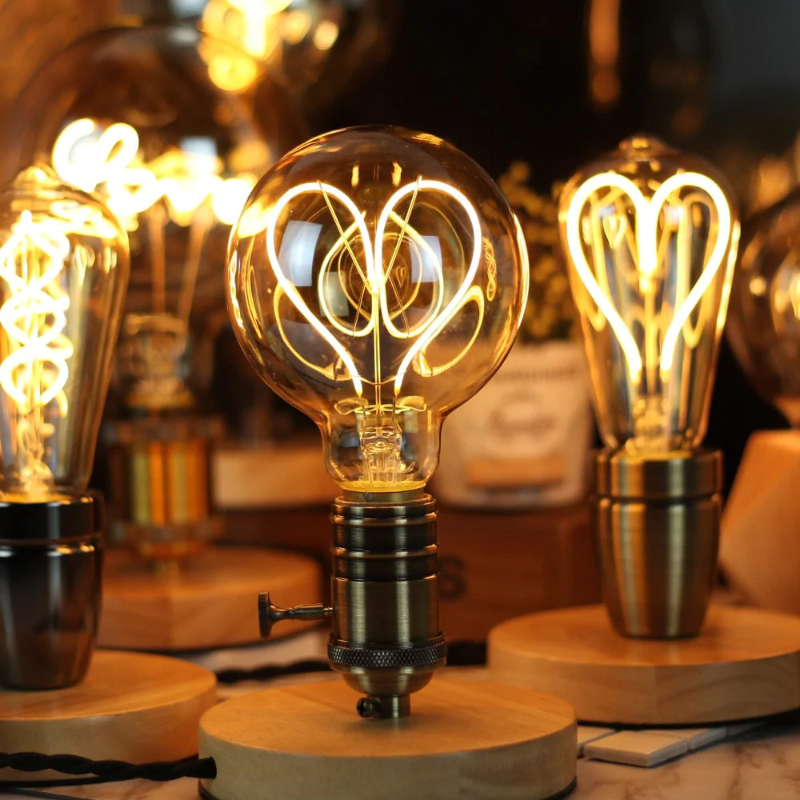Introduction
When it comes to home decoration, lighting plays a crucial role in setting the mood and enhancing the aesthetics of any space. As someone who loves to experiment with different decor styles, I found that LED bulbs offer not only energy efficiency but also a wide array of design options and colors that can transform any room. In this article, we’ll dive deep into how LED bulbs can elevate your interior and exterior spaces, look at various types of LED bulbs for decoration, and provide practical tips to make the most out of your lighting choices.
Understanding LED Bulbs
LED stands for Light Emitting Diode. These bulbs are highly energy-efficient and have a longer lifespan than traditional incandescent or fluorescent bulbs. They are available in various shapes, sizes, and colors, making them a favorite for decorative purposes.
Advantages of Using LED Bulbs for Decoration
- Energy Efficiency: LED bulbs consume significantly less electricity.
- Longevity: They can last up to 25,000 hours or more.
- Variety: Available in multiple colors, shapes, and brightness levels.
- Low Heat Emission: They generate less heat, making them safer for various decor applications.
Types of LED Bulbs for Decoration
When selecting LED bulbs, understanding the types available can help you make informed choices for your decoration needs.

1. A19 LED Bulbs
The standard shape for most home lighting solutions, A19 LED bulbs are great for general illumination.
2. Edison LED Bulbs
Edison-style bulbs offer a vintage look that is perfect for creating a nostalgic atmosphere.

3. MR16 LED Bulbs
These are often used in track lighting and are excellent for highlighting art pieces or architectural features.
4. Strip LED Lights
Flexible and easy to install, LED strips are great for accent lighting and can be used under cabinets, along shelves, or in coves.

5. Smart LED Bulbs
These bulbs can be controlled via mobile apps or voice commands, offering versatility in color and brightness.
How to Choose the Right LED Bulbs for Your Decor
Choosing the right LED bulbs involves considering several factors:

1. Purpose of Lighting
Are you looking for ambient lighting, task lighting, or accent lighting? Each requires different types of bulbs and brightness levels.
2. Color Temperature
LED bulbs come in various color temperatures measured in Kelvin (K):
- Warm White (2700K – 3000K): Ideal for cozy spaces.
- Cool White (3500K – 4100K): Good for kitchens and workspaces.
- Daylight (5000K – 6500K): Bright and energizing, suitable for reading and hobbies.

3. Brightness Level
Brightness is measured in lumens. More lumens mean brighter light, so consider how bright you want each area to be.
4. Décor Style
Choose bulbs that match your interior design. For a modern look, opt for sleek and minimalist styles, while vintage designs can enhance rustic or classic decor.

Practical Tips for Decorating with LED Bulbs
Now that you know what types of LED bulbs are available and how to choose them, here are some practical tips on how to use them effectively in your decorating endeavors:
1. Layer Your Lighting
Combine ambient, task, and accent lighting for a well-lit space that feels inviting.

2. Use Dimmer Switches
Installing dimmer switches allows you to control the brightness and create different moods.
3. Highlight Features
Use MR16 bulbs or spotlights to highlight decor elements like artwork, architectural details, or plants.
4. Experiment with Color
With smart LED bulbs, you can change colors based on your mood or occasion.
Comparison Table: Different Types of LED Bulbs
| Type | Best For | Brightness (Lumen) | Color Temperature (K) | Average Lifespan (Hours) |
|---|---|---|---|---|
| A19 | General use | 800 | 2700 – 3000 | 25,000 |
| Edison | Decorative lighting | 400 | 2200 – 2700 | 15,000 |
| MR16 | Highlighting | 700 | 2700 – 3000 | 25,000 |
| Strip | Accent lighting | Varies | 3000 – 6500 | 20,000 |
| Smart | Automated lighting | 800 | 2700 – 4000 | 20,000 |
Pros and Cons of LED Bulbs for Decoration
Pros
- Long lifespan and low maintenance costs.
- Significantly reduce energy costs.
- Available in a variety of styles and colors.
- Eco-friendly with no harmful substances.
Cons
- Higher initial price compared to traditional bulbs.
- Some lower-quality models may flicker or have poor color rendering.
- Not all dimmable varieties work with standard dimmer switches.
Personal Experience: My Journey with LED Bulbs
As a DIY enthusiast, I’ve tried several types of LED bulbs for various decor projects around my home. My journey began when I decided to revamp my living room. I chose warm white A19 bulbs for the main fixtures to create a cozy environment. However, I added Edison bulbs to my industrial-style lamp, which gave the space a charming retro vibe. Each project taught me something new about light layering and the impact of color temperature on the mood of a room.
Common FAQs About LED Bulbs for Decoration
1. Can LED bulbs be used in any lighting fixture?
Yes, most LED bulbs can be used in standard fixtures, but you should always check the compatibility with your fixtures, especially for dimmable options.
2. How do I know which LED bulb is best for my space?
Consider the purpose of the room and the atmosphere you wish to create. Use warmer tones for relaxed spaces and cooler tones for task-oriented areas.
3. Are smart LED bulbs worth the investment?
If you enjoy the convenience of controlling your lights remotely and experimenting with different colors and settings, smart LED bulbs can be a great addition.
4. How can I reduce the flickering of LED bulbs?
Ensure you are using high-quality bulbs and compatible fixtures. Using dimmable bulbs with appropriate dimmers also helps prevent flickering.